F.A.S.T., it turns out, stands for “F*** All Standards Technology”, and rather than that resulting in a bike where nothing quite fits right, they’re working toward a bike where just about everything can.
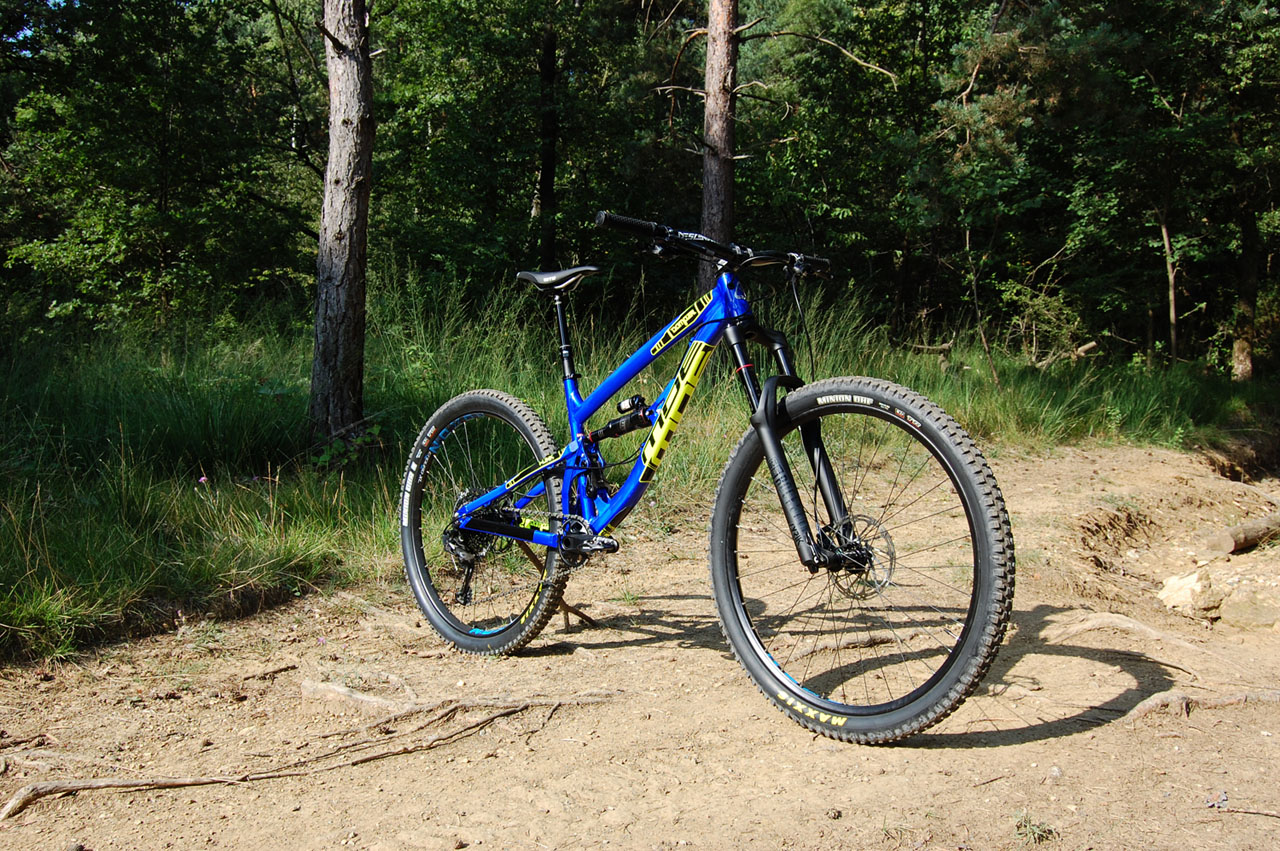
Their new Damper 160mm 29er can take a metric or old-style shock, 160 – 180mm forks, and any ISCG05 or ISCG03 chainguide via removable brackets, which also align them properly for 1×11 or 1×12 drivetrains. On top of that, it can take 29er wheels with up to a 2.5 tyre, or 27.5+ up to a 3.0 tyre; in 142x12mm or 148x12mm axle varieties depending on what dropouts you fit (the press release also mentioned 150x12mm dropouts, though these don’t seem to be available as an option on the MDE website). They’ve also retained compatibility with Shimano side pull front mechs so you can run a double if you really want.
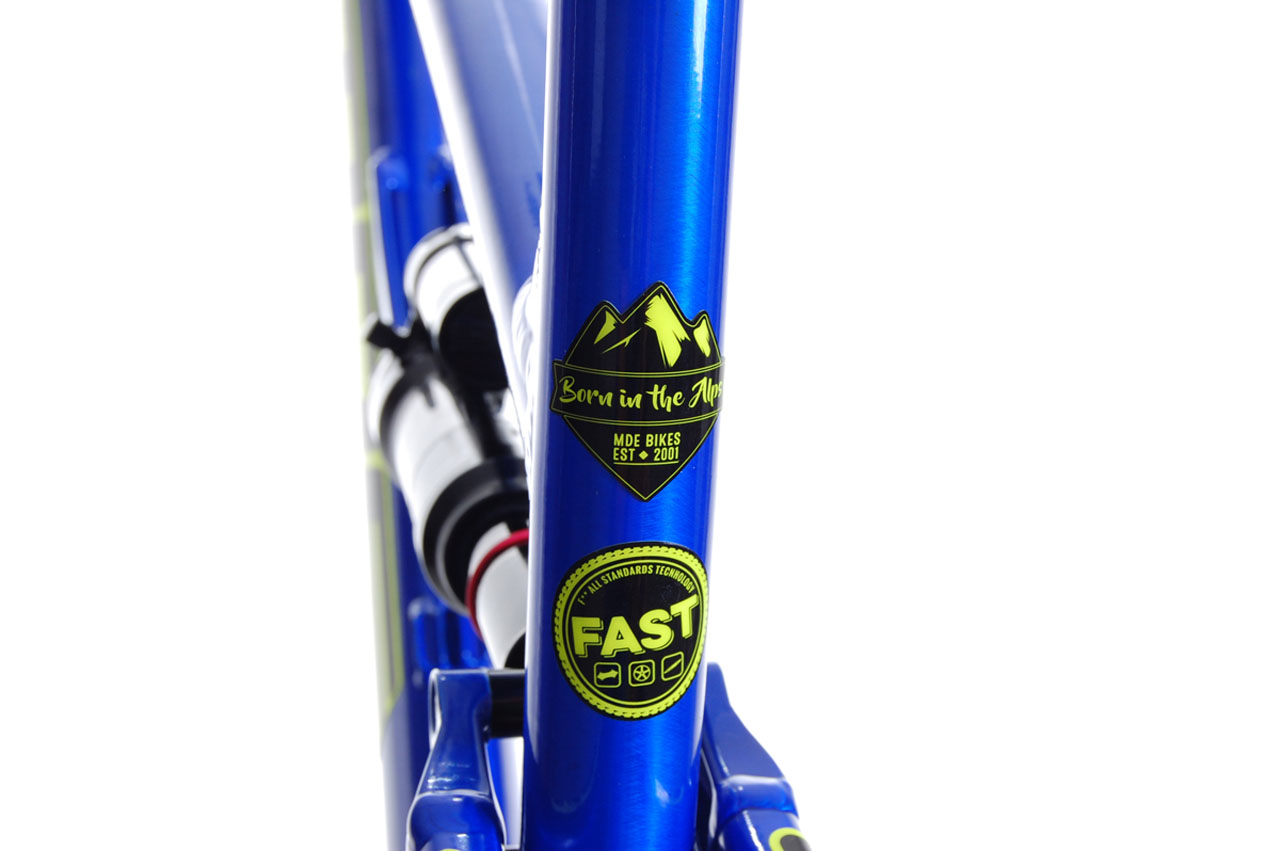
The few bits they’ve not yet devised ways of opening up more options for are the seatpost, which has to be 30.9, and the headset, which is ZS44 upper, and EC49 lower. Perhaps one day they’ll have a frame that works with any headset, any seatpost, any drivetrain and any wheels, but today is not quite that day.
They sell direct and most of the options are configurable via their website. Framesets start at €1739, and full bikes at €3899. Read on to see what MDE are saying about it themselves, as well as find specs and geometry at the bottom.
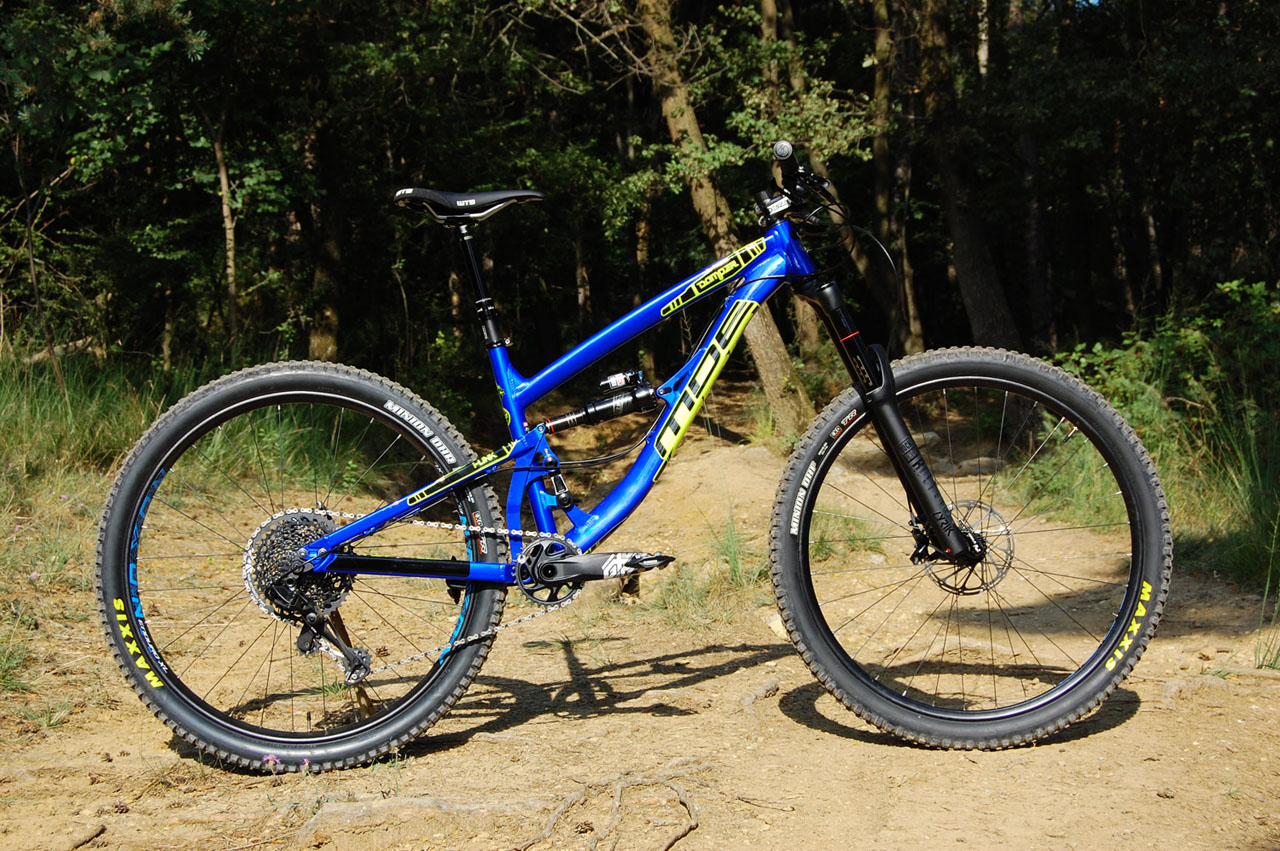
“We compensated the natural dynamic slowness of the big wheels by acting on two sides: first we made a extremely vertical (76.2 °) seat angle. This pushes to load even more the weight on the front wheel; this allows for maximum steering precision to reach precisions levels very high for a 29-wheeled bike with a so closed angle (65.5 °).
“This also fits perfectly with the height of the handlebars from the ground, so also if the position of the centre of gravity being very advanced, it does not feel like being too much out on the front wheel and uphill results in a very precise bike that hardly lightens the front wheel on the steep situation.
“On the other hand, we have optimized the behavior of the rear suspension to make it even more responsive and sustained in the center of the compression curve. This makes the ride even more active and allows to balance the back reactions to the granitic behavior of the front wheel.
“The result of all this is a surface-to-air missile with such high usage limits that it is very difficult to reach. A ball buster on the fast paths but at the same time easy to handle in the narrow curves.
“It is an absolute weapon for experienced racers but at the same time a high performance machine that will allow you to make a further step to improving your riding level.”
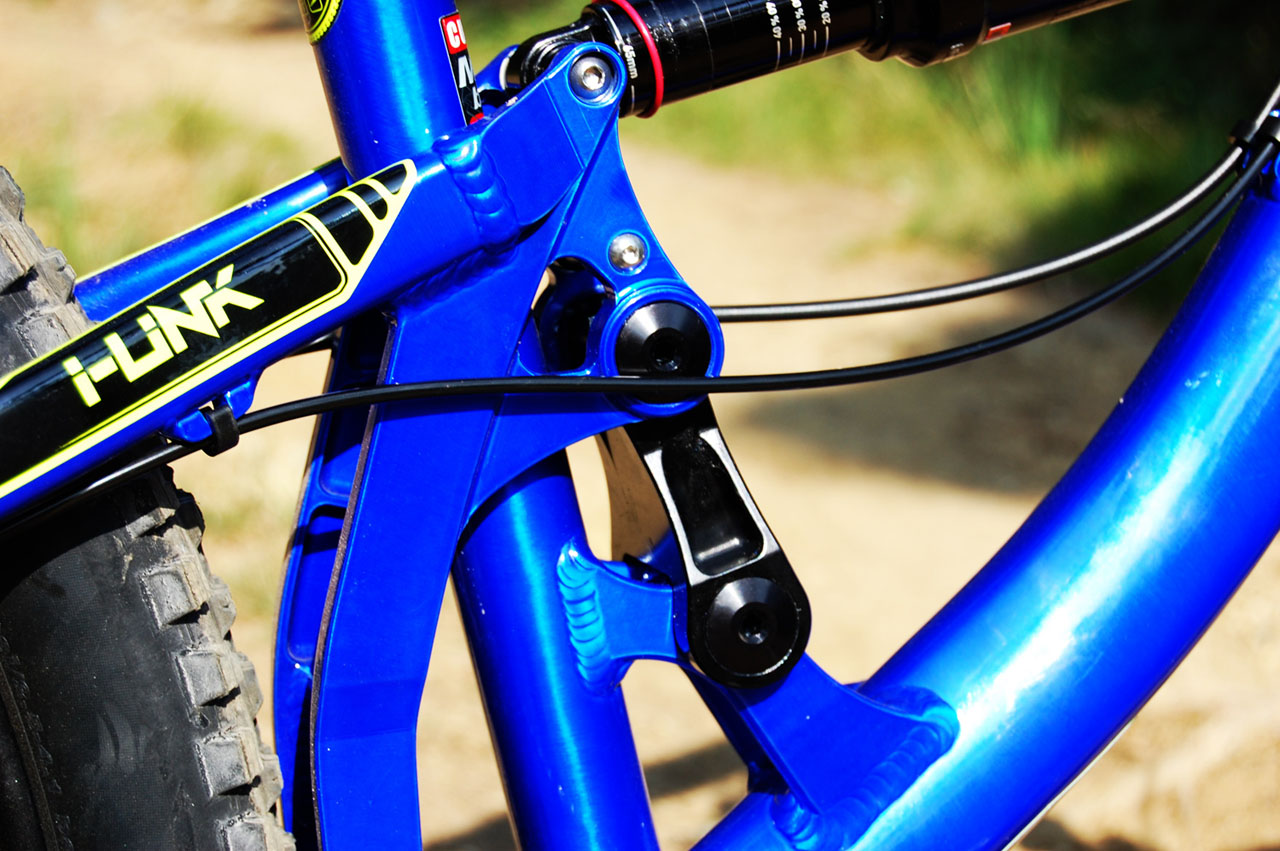
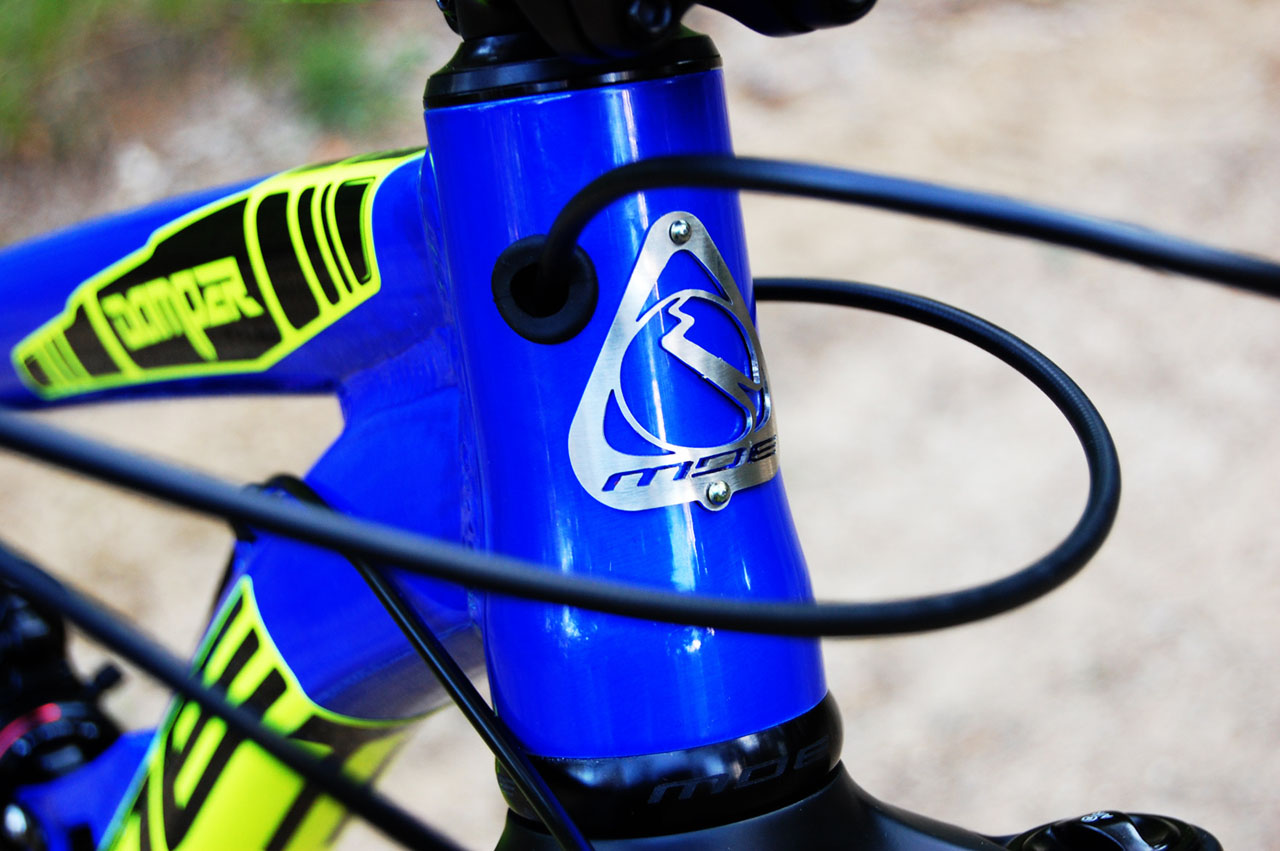
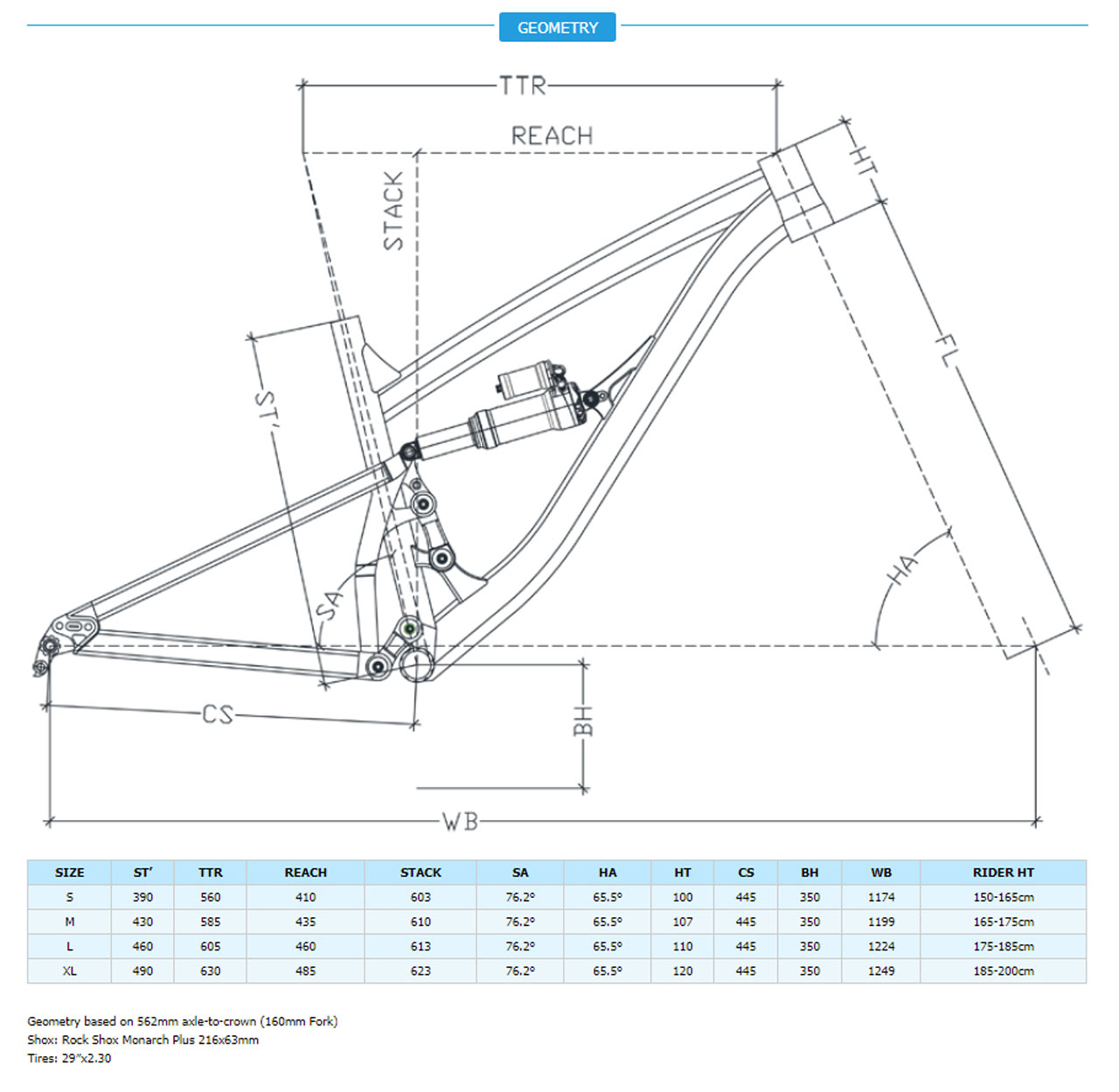






I’m reading ‘HUNK’ on that seatstay…
Even the typography is mutli-standard!
Always been tempted by an MDE mainly because of their rider tuned geometry being at a sensible price. http://www.mdebikes.com/rider-tuned-geometry/
So it’s incompatible with 31.6 droppers, which are the most common size? Coud have gone wih the bigger size, using a shim for 30.9.
Standards, eh?
Dropper manufacturers tend to specify their posts shouldn’t be used with shims. I would love to pick a frame designer’s brain on seat tube size though, and how much it changes the way a frame feels or performs. (Pulling just a few examples out of my brain from the past year) Orange, Stif, Stanton, and Production Privee have tended to go for 30.9 too.
They said ‘weapon’……and for that reason,I’m out.
It’s not that revolutionary, most of the Banshee range do similar. My Spitfire can do 26 and 27.5 wheels, standard and boost hub widths, adjustable geometry, chain guide tabs and can run a front mech